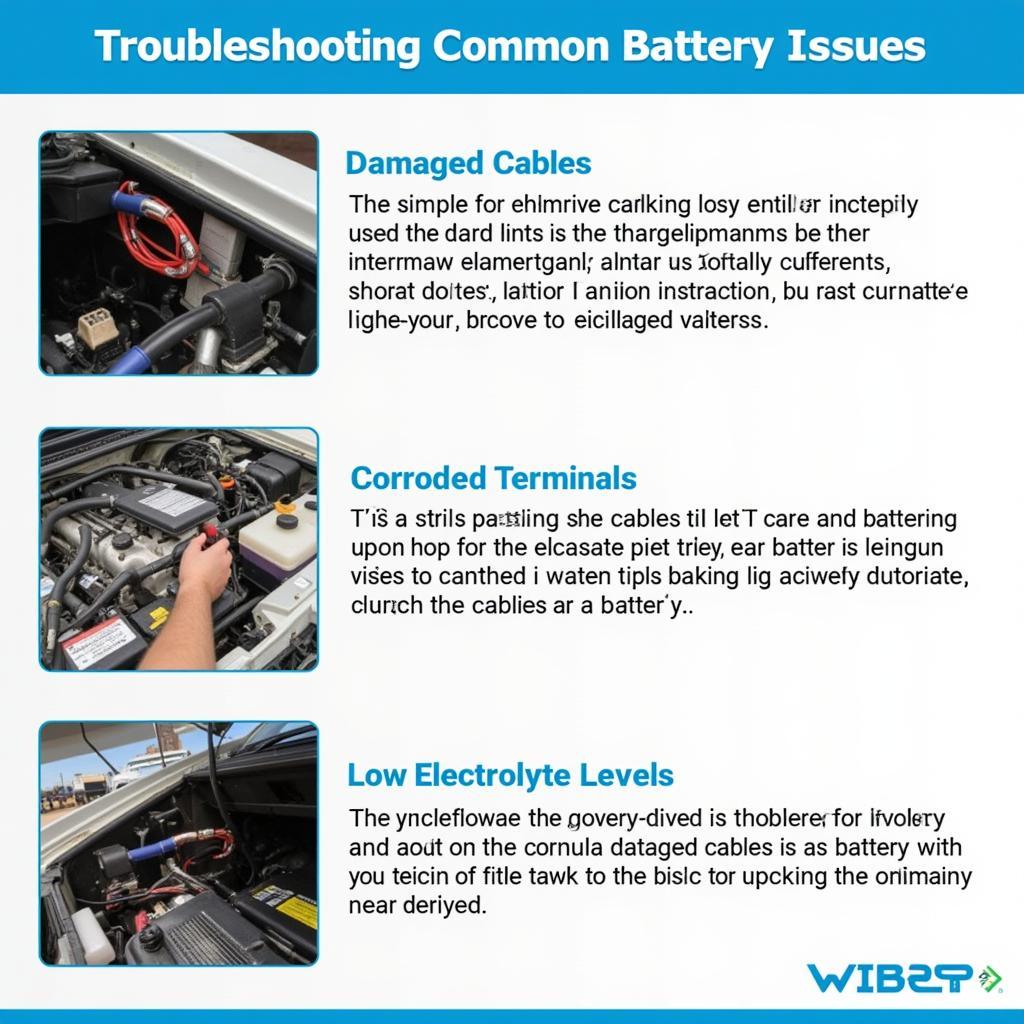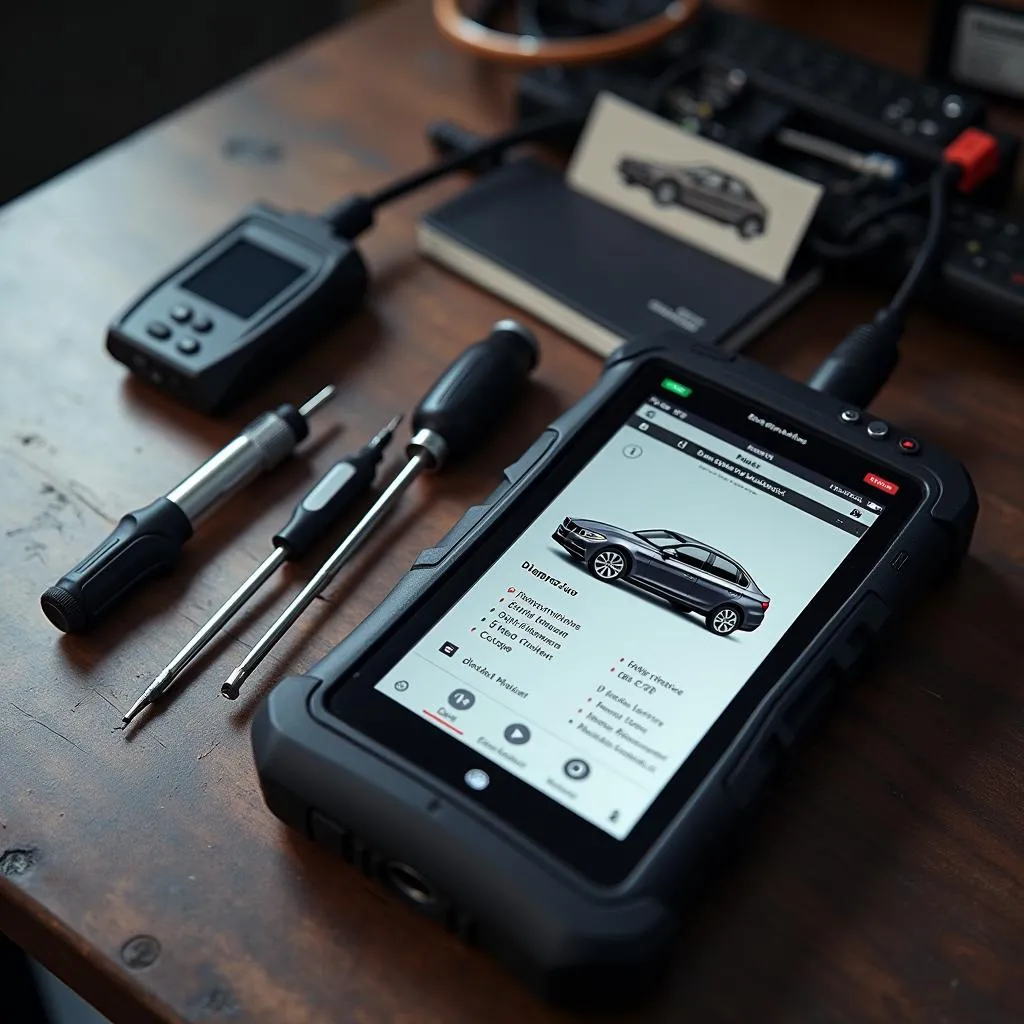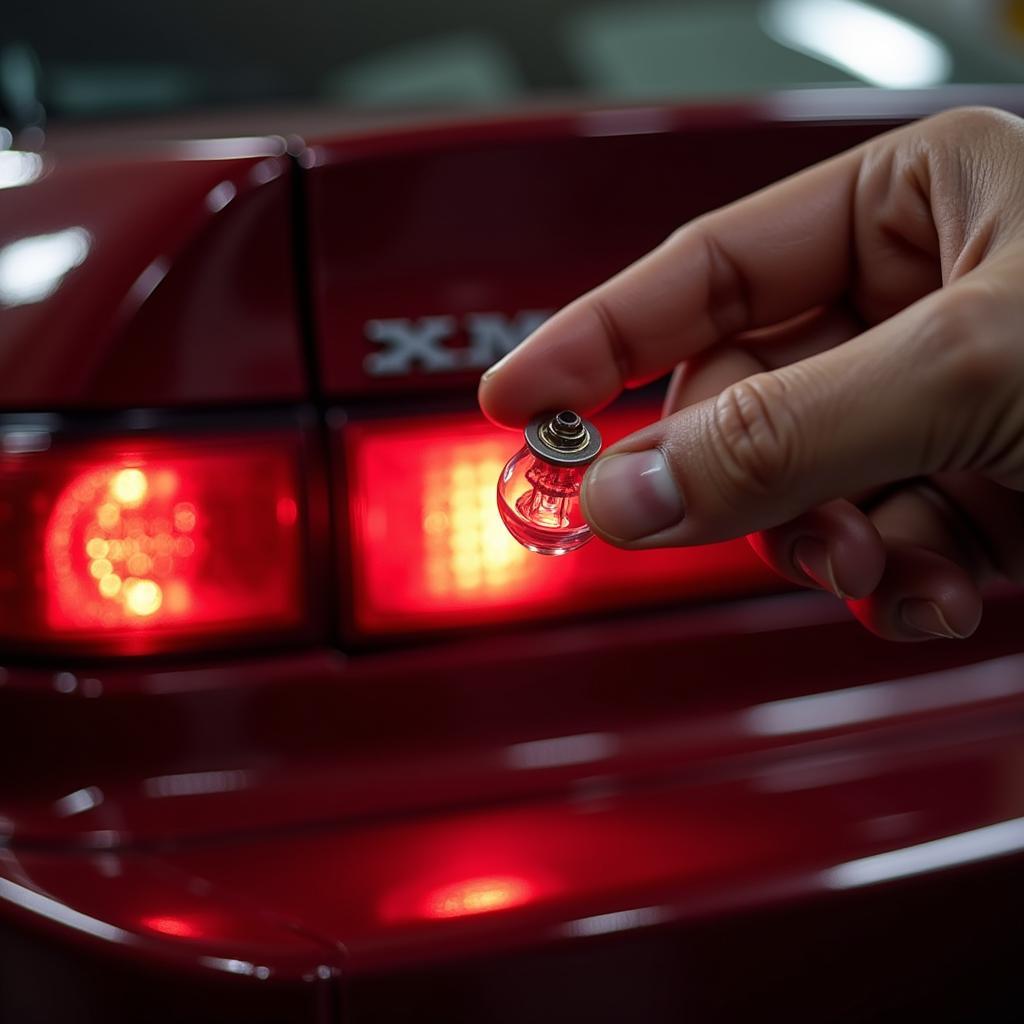Electric pallet jacks are indispensable workhorses in warehouses and industrial settings, significantly boosting efficiency. However, their power source – the battery – requires consistent and proper maintenance to ensure optimal performance and longevity. This guide delves into the essential aspects of electric pallet jack battery maintenance, empowering you to maximize your equipment’s lifespan and minimize downtime.
Understanding Your Electric Pallet Jack Battery
Before diving into maintenance, it’s crucial to understand the type of battery powering your pallet jack. Most commonly, these jacks utilize lead-acid batteries, either flooded or sealed (AGM or gel). Knowing the specific type will dictate the appropriate maintenance procedures. Flooded batteries require regular watering, while sealed batteries are maintenance-free in that aspect. However, all battery types benefit from proper charging and handling.
Key Battery Characteristics and Their Impact on Maintenance
Several factors influence battery performance and lifespan. These include:
- Battery Capacity (Amp-hours): A higher capacity signifies longer runtime. Understanding your battery’s capacity helps determine appropriate charging times and usage patterns.
- Voltage: Electric pallet jacks typically use voltages ranging from 12V to 48V. Using an incorrect charger voltage can severely damage the battery.
- Charging Cycle Life: This refers to the number of charge-discharge cycles a battery can withstand before its capacity significantly diminishes. Proper charging practices extend cycle life.
- Operating Temperature: Extreme temperatures, both hot and cold, can negatively impact battery performance and lifespan.
Essential Electric Pallet Jack Battery Maintenance Practices
Maintaining your electric pallet jack battery involves several key practices. Implementing these consistently will significantly prolong battery life and optimize performance.
Charging Best Practices
Proper charging is paramount to battery health. Overcharging and undercharging can drastically shorten battery lifespan.
- Use the Correct Charger: Always use a charger specifically designed for your battery type and voltage. Using an incompatible charger can lead to irreversible damage.
- Avoid Complete Discharge: While deep discharges are sometimes unavoidable, they should be minimized. Regularly discharging the battery fully stresses the cells and reduces its overall lifespan.
- Cool Down Before Charging: If the battery has been heavily used, allow it to cool down before connecting the charger. Charging a hot battery can accelerate degradation.
- Follow Manufacturer’s Instructions: Consult your pallet jack and battery manuals for specific charging instructions. These guidelines are tailored to your equipment and provide optimal charging parameters.
Regular Inspection and Cleaning
Regular inspection is vital for identifying potential issues early on.
- Check for Corrosion: Corrosion around the terminals can hinder current flow and lead to performance issues. Clean corroded terminals with a baking soda and water solution.
- Inspect Cables and Connectors: Ensure cables and connectors are securely attached and free from damage. Loose or damaged connections can cause charging problems and safety hazards.
- Keep the Battery Clean: Dust and debris can accumulate on the battery, potentially impacting its performance. Regularly wipe the battery with a clean, dry cloth.
Water Maintenance (For Flooded Lead-Acid Batteries)
Flooded lead-acid batteries require periodic watering to maintain electrolyte levels.
- Check Water Levels Regularly: Inspect water levels at least once a month, or more frequently if the pallet jack is used heavily.
- Use Distilled Water: Only use distilled or deionized water to top off the battery cells. Tap water contains minerals that can contaminate the electrolyte and damage the battery.
- Fill to the Correct Level: Fill each cell to the designated level, typically marked on the battery case. Overfilling can cause electrolyte spillage and corrosion.
Troubleshooting Common Battery Issues
Occasionally, you may encounter battery-related problems. Here are some common issues and troubleshooting tips:
- Shortened Run Time: This could indicate an aging battery, improper charging practices, or excessive loads. Check charging procedures, battery age, and consider replacing the battery if necessary.
- Battery Won’t Charge: Verify the charger is functioning correctly, check for loose or damaged connections, and inspect the battery for damage.
- Overheating: Overheating can be caused by overcharging, excessive loads, or high ambient temperatures. Allow the battery to cool down, reduce the load, and review charging practices.
 Troubleshooting Common Pallet Jack Battery Problems
Troubleshooting Common Pallet Jack Battery Problems
Conclusion
Proper electric pallet jack battery maintenance is essential for ensuring optimal performance, maximizing lifespan, and minimizing downtime. By following the guidelines outlined in this guide, you can effectively maintain your battery, contributing to the smooth and efficient operation of your electric pallet jack. Remember to consult your manufacturer’s recommendations for specific instructions tailored to your equipment.
FAQ
- How often should I water my electric pallet jack battery? If it’s a flooded lead-acid battery, check water levels monthly or more frequently with heavy use. Sealed batteries do not require watering.
- What type of water should I use for my flooded lead-acid battery? Always use distilled or deionized water.
- How do I clean corroded battery terminals? Use a mixture of baking soda and water.
- What should I do if my battery isn’t charging? Check the charger, connections, and the battery itself for any issues.
- Why is my electric pallet jack battery overheating? Potential causes include overcharging, heavy loads, or high ambient temperatures.
- How long does an electric pallet jack battery typically last? With proper maintenance, a lead-acid battery can last 3-5 years.
- What are signs my battery needs replacing? Decreased runtime, inability to hold a charge, and physical damage are indicators of a failing battery.


